Insurance: 101
Insurance can be daunting. This guide can help you understand how it works.

Overview
Those who don't work in the insurance industry may find insurance coverage and payment calculations confusing. Do not fret! This is common! We here at Blue Cross Blue Shield FEP Dental are here to shed some light on the subject. Do keep in mind that this is an information overview of insurance basics, so not all aspects of this article may apply to your BCBS FEP Dental policy.
Non-Covered Services
Granted, not the most welcome of phrases, "non-covered services" refers to certain medical or dental procedures or services that are not covered under the insurance plan. Many services that are considered elective, cosmetic, or not medically necessary would fall under this category. This means, you pay 100% of the service out of pocket. An example is teeth whitening because it is considered cosmetic and not medically necessary.
However, not all non-covered services are created equal ‐ some are simply not covered because the provider shouldn?t have even billed for them! For example, a temporary crown is inclusive to a permanent crown procedure and should not be billed separately.
- Before paying for non-covered services, pay close attention to your EOB (explanation of benefits) for the service in question.
- Any charges listed as not covered under the plan should have a Remark Code, Reason Code, or Notes that explain why payment for the procedure was denied.
- This denial reason will explain whether the charge should be your responsibility or the provider's.
If, for example, you receive a bill from a provider for a non-covered service, but when reviewing your EOB, it states that the insurance company was waiting for x-rays from the provider, don't just pay the bill! Call the provider's office to determine if they will be sending or have already sent those x-rays, as the bill you received may have been sent in error.
In-Network vs. Out-of-Network
Ah, the age-old question: to be or not to be (in-network). That is the question ... providers need to ask themselves. Each health/dental/vision insurance company compiles provider networks, which are groups of providers, hospitals, and clinics that contract with the insurance carrier to provide care to the members covered under their insurance plans:
- Insurance companies can administer one or several different provider networks.
- The insurance company will assign a specific network to each insurance plan they administer, which will be listed on the insurance card.
- A provider may participate in one or several of an insurance company's provider networks, but isn't required to join all networks the insurance company provides.
- Because of this, it is important to specify not just the insurance company name, but also the name of the provider network when discussing insurance coverage with providers.
Network Savings
In joining a provider network, providers agree to reimbursement rates for different procedures that they perform. As this reimbursement rate is often lower than the provider's full charge for the service, the discounted amount is often referred to as "Network Savings" or "Provider Discount". This discount is taken from the full charge of the procedure before deductible or coinsurance are calculated.
The greatest cost savings comes from visiting in‐network providers. Many insurance plans do offer benefits for visiting uncontracted, out‐of-network providers, but there would be no network savings discount and usually only half of the charged amount is paid by insurance (if any at all), leading to a much higher out-of-pocket expense.
Copays
Copays are a pretty simple concept ‐ you go to the doctor or pharmacy and have a set amount that you have to pay out-of-pocket.
- As long as you pay your copay and are visiting an in‐network provider, the insurance takes care of the rest of the bill!
- When visiting an out‐of‐network provider, you may be responsible for not only the copay, but also what would be the network savings amount, or possibly the whole bill, depending on if/how your plan pays for out-of-network services.
- Copays are most commonly applied to medical office visits, specialist visits, and prescriptions; however not ALL plans have a copay ‐ some plans only have coinsurance.
Allowed Amount
This is an easy one! The allowed amount is the total amount allowed for a service after network savings (provider discount) has been applied.
-
The allowed amount is the amount from which the deductible is taken and coinsurance calculated.
- For example: $100 (total charges) ‐ $50 (network savings) = $50 (allowed amount)
Deductible
Your deductible is the out-of-pocket amount you need to pay before insurance payments start kicking in.
- Deductible amounts are generally a higher dollar amount ‐ from $500 ‐ $5000, depending on the insurance plan.
- Deductibles are usually not applicable for services where you instead have to pay a copay, and copay amounts are not applied to the deductible paid amount.
- Some plans have individual deductible amounts, family deductible amounts, in-network deductible, and out-of-network deductible.
-
For services provided at an in-network provider, any unmet deductible is calculated after the network savings has been applied.
- For example: $100 (total charges) ‐ $50 (network savings) = $50 (allowed amount applied to unmet deductible)
- Once the deductible is met, coinsurance and insurance payments are applied.
Coinsurance
Coinsurance is a certain percentage of the bill that you must pay and varies from plan to plan.
- Coinsurance is usually not applicable for services where you instead have a copay.
- The percentage of coinsurance applied can differ depending on the type of provider visited, type of service performed, or whether the provider is in- or out-of-network.
-
For services provided at an in-network provider, coinsurance is calculated after the network savings has been applied and the deductible has been met.
- For example: $100 (total charge) ‐ $50 (network savings) = $50 (allowed amount)
- $50 (allowed amount) x 20% (coinsurance rate) = $10 (coinsurance amount/total out‐of‐pocket)
Insurance Claim Calculations
Now that you have the basics, let's apply some skills we questioned ever needing again while in school: Math!
The following are all equations based on visiting an in-network provider, but may be helpful in understanding how claims are calculated.
Copay
Out-of-Pocket: $10 (Copay)
$100 (Total Charge)
-$50 (Network Savings)
$ 50 (Allowed Amount)
-$ 10 (Copay)
$ 40 (Insurance Payment Amount)
Meeting Deductible and Applying Coinsurance
Out-of-Pocket: $20 (Deductible) + $6 (Coinsurance) = $26
$ 100 (Total Charge)
-$ 50 (Network Savings)
$ 50 (Allowed Amount)
- $ 20 (Fulfilled Deductible)
$ 30 (Remaining Allowed Amount after Deductible met)
X 20% (Coinsurance Rate) X 80% (Insurance Pay Rate
$ 6 (Coinsurance Amount) $ 24 (Insurance Payment Amount)
Hopefully, this article has helped you understand the ins and outs of how insurance payments are calculated. Make sure to check out your benefit booklets or insurance company websites to learn more about your insurance policies' deductibles, copays, and coinsurance amounts. If you still have any questions or concerns regarding how your claims have been processed, feel free to contact the Customer Service phone number on the back of your insurance card for further assistance.
Premiums
An insurance premium is the amount you pay every month to maintain insurance coverage. This is the standardly used term, whether it be for health, dental, vision, life, or auto insurance.
Those of us who receive health/dental/vision insurance through our employers will find a deduction on our paystubs for insurance coverage. This amount is used to pay the insurance premium.






